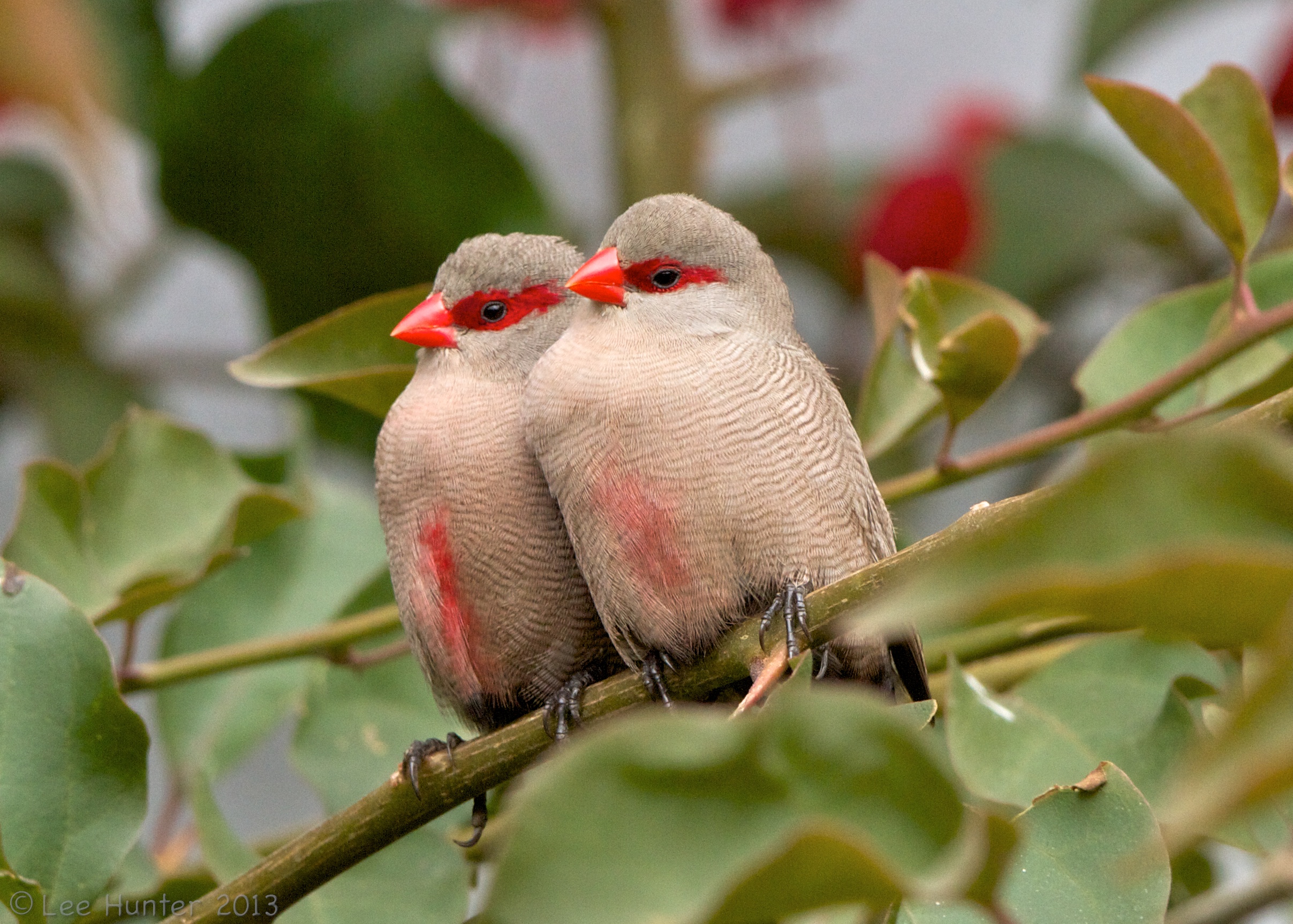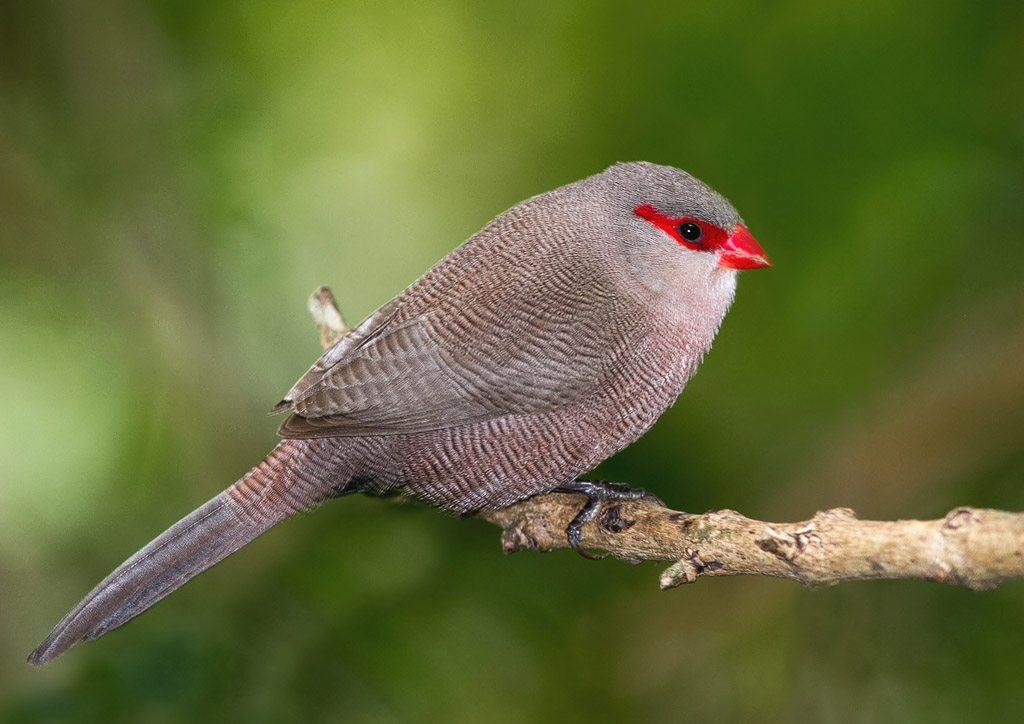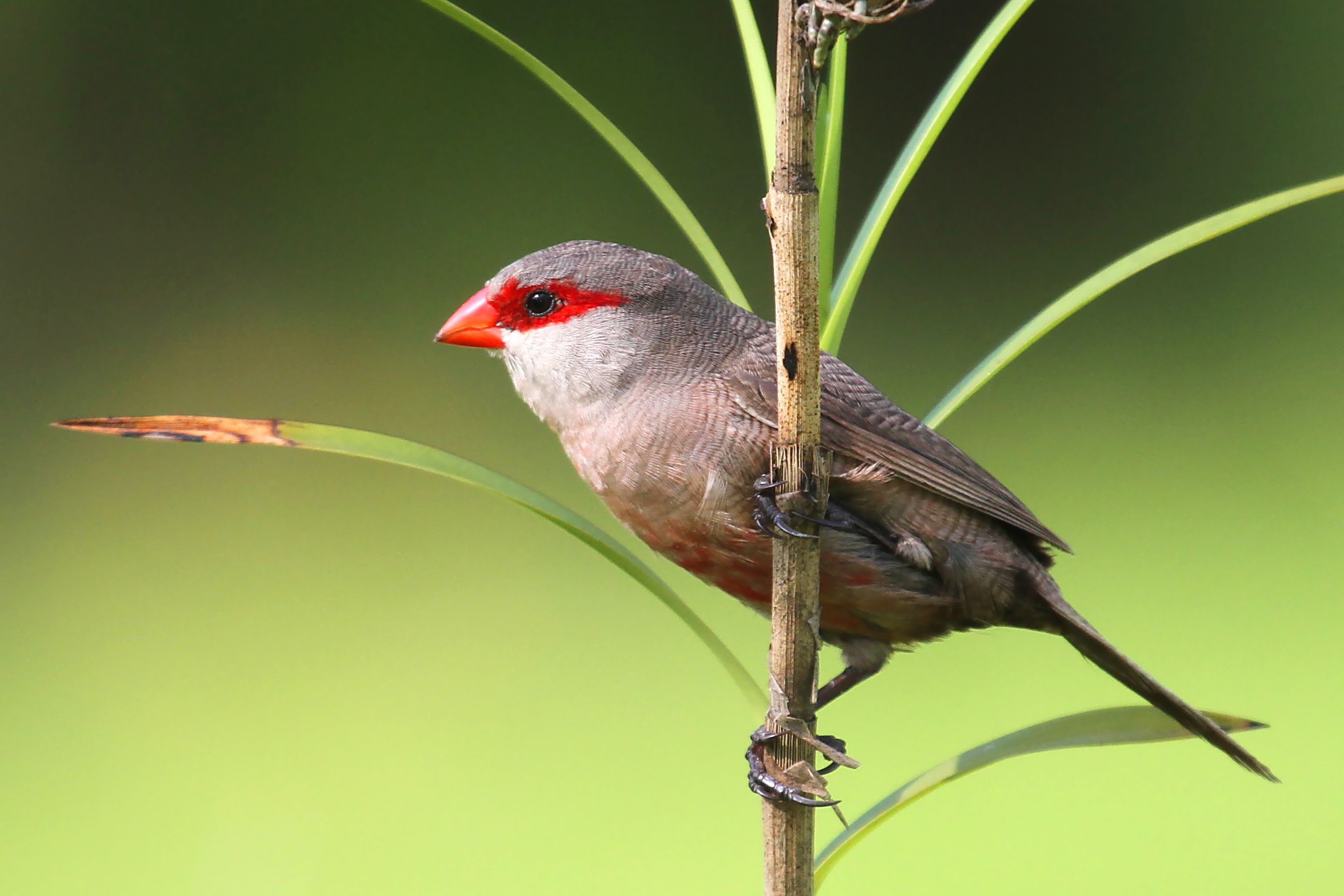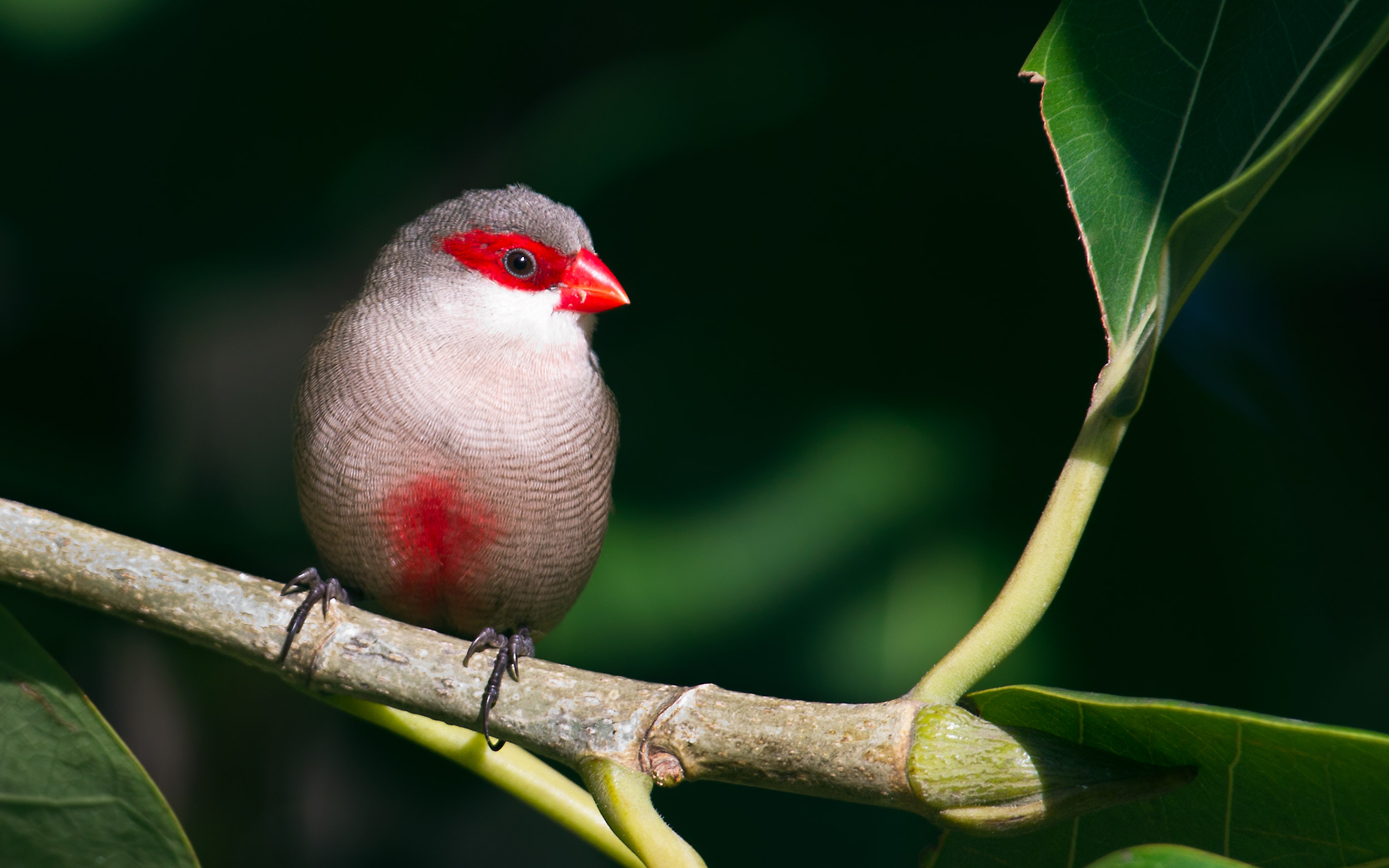
Estrilda astrild
SUBFAMILY
Estrildinae
TAXONOMY
Loxia astrild Linnaeus, 1758.
OTHER COMMON NAMES
English: St. Helena waxbill, barred waxbill, brown waxbill,
pheasant finch; French: Astrild ondulй; German: Wellenastrild;
Spanish: Astrilda Comъn.
PHYSICAL CHARACTERISTICS
4.3–5.1 in (11–13 cm). Sexes are alike. Juveniles are paler than
adults and have fainter barring.
DISTRIBUTION
Found naturally in southern Senegal, east to Ethiopia, south to
South Africa, essentially throughout most of sub-Saharan
Africa. Has been introduced in Brazil, Portugal, and many islands
throughout the world including Hawaii, Tahiti, the Seychelles,
Bermuda, and Puerto Rico.
HABITAT
Prefers areas with tall grass including marsh, reed beds, abandoned
cultivated areas, gardens, grassy clearings or paths, and
farms or plantations.
BEHAVIOR
Being highly gregarious, this species is found in small flocks
during the breeding season and larger flocks when not breeding.
Calls include a “chip,” “tchic,” and “pit” while the song is
described as a “tcher-tcher-preee,” although it can be highly
variable.
FEEDING ECOLOGY AND DIET
Feeds mainly on a diversity of seeds taken both from growing
plants and off the ground. Swarming termites as well as other
insects make up a small portion of the diet.
REPRODUCTIVE BIOLOGY
Builds a pear-shaped nest of grass stems at or near the ground.
Four to six white eggs are incubated for 11–12 days. This species
is the brood host for the pin-tailed whydah (Vidua macroura).
CONSERVATION STATUS
CITES: Appendix III. Not threatened according to IUCN criteria
SIGNIFICANCE TO HUMANS
Commonly kept in captivity, this species has been bred in aviaries
and cages and is readily offered for beginning aviculturists.
Other popular Animals
Photo Gallery of - Common waxbill




 Animalia Life
Animalia Life